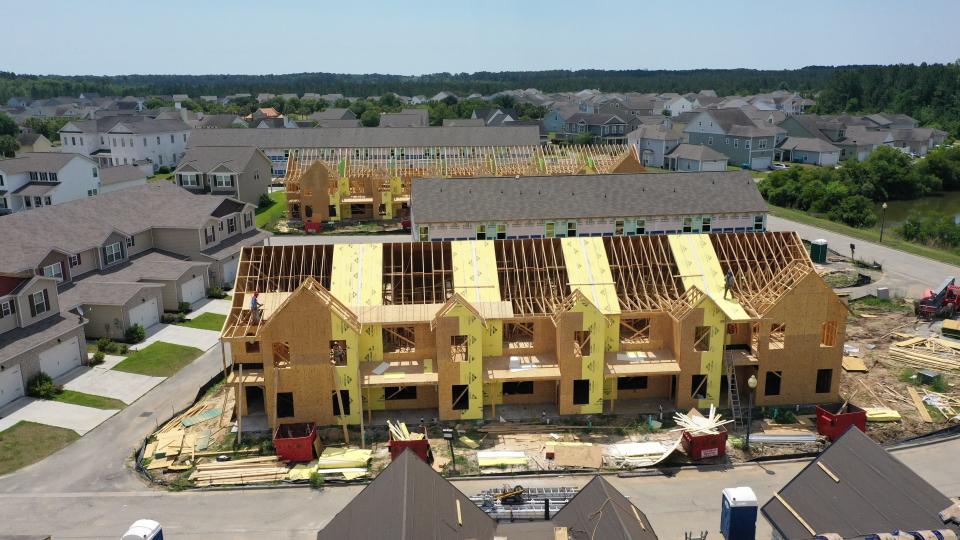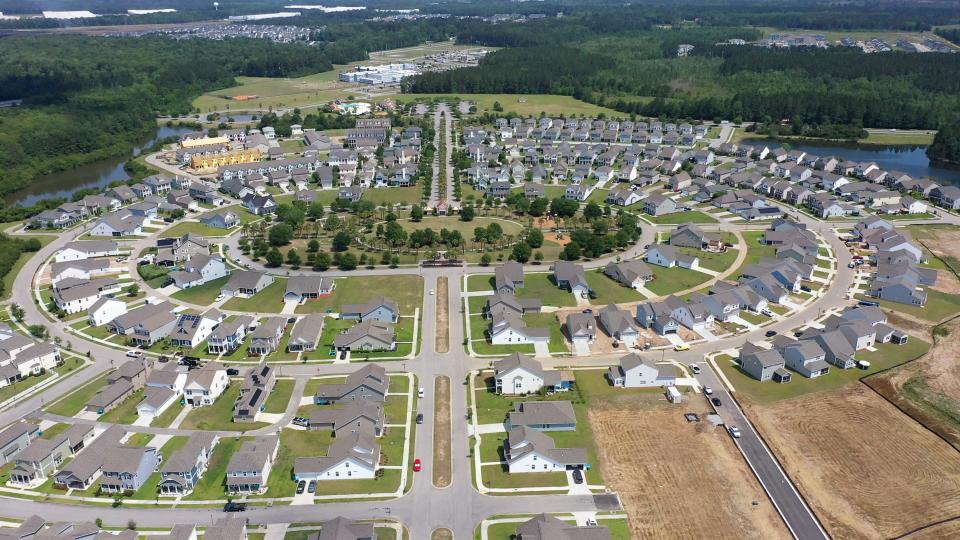Striking a balance: Port Wentworth considers redistricting after census shows population shifts
The City of Port Wentworth is considering redrawing its district lines after decennial census data showed significant growth within the municipality. Since 2010, the city saw its population more than double from around 5,300 to nearly 12,000 people, making it one of the fastest growing cities in Georgia.
Most municipalities, if governed by districts, will reevaluate their district lines after the decennial census is released, as population growth could lead to shifts within their communities.
Auditors: Port Wentworth’s comprehensive plan is 'vague' and 'contains no real vision'

For Port Wentworth, growth buoyed by rapid housing development on the city's north en, led to disproportionately higher numbers within District 1. About 4,000 people live within District 1 while the city's smallest district, District 4 located on Port Wentworth's south end, has about 1,630 people.
Similar to larger county and state legislative districts, municipal districts should aim to have roughly equal populations so that each voter has equal influence on electing members of their governing authority. That idea is protected under federal law and the legal principle, “one-person, one vote.”
In North Port Wentworth, where the population is diverse, voting power is diluted since only one council member represents their district.
Because of the glaring disparity, the city pulled in Georgia’s Legislative and Congressional Reapportionment Office in early September to draft up a new set of maps that would restore balance between Port Wentworth’s four districts, said City Manager Steve Davis. New districts haven’t been drawn since 2013 after the city first implemented a by-district system.
During a Nov. 1 City Council workshop, council members looked at five different maps. Council is expected to make a decision on the final version before the end of the year. Residents will have a chance to comment as the redistricted map comes before council. Redrawn districts constitute an ordinance change and require two readings.
How soon the new districts will take effect depends on how the city attorney drafts up their local resolution.
New map restores balance
Based on the discussion, the council leaned towards a draft that would extend the smallest district, District 4, north and expand District 3, located in the center of the municipality, to the northwest. The new district lines redistributes population in the largest district, District 1.
Port Wentworth Redistricted Map by savannahnow.com on Scribd
District 1 - 4,058
District 2 - 2,558
District 3 - 2,625
District 4 - 1,637
Total Population 2020 Census - 10,878
New Ideal District Population - 2,720
Each of the four new districts would have a population between 2,696 and 2,737. The numbers are closer to Port Wentworth’s “ideal district” of 2,720, which is the city’s total population divided by the total number of districts.
When measuring the fairness of local districts, the reapportionment office will consider how much each district deviates from this ideal. In this new map, deviation from the ideal number ranges between -0.88% and 0.63%. Compare that to Port Wentworth’s current district deviation which ranges between about -39% to 49%.

More: Auditors: Port Wentworth’s comprehensive plan is 'vague' and 'contains no real vision'
More: Port Wentworth city planning woes: must redo ordinance, revisit comprehensive plan
Generally, districts shouldn’t deviate more than 10% from that number, according to the Georgia Municipal Association’s 2022 Redistricting Guide. The 10% rule is applied in other election districts too, such as county, board of education and state legislative districts.
However, unlike state congressional districts, local government districts are not mandated by Georgia law to redistrict after every decennial census, but, rather, in order to guarantee their citizens’ constitutional rights.

More: Port Wentworth's rural neighborhoods face an uncertain future with warehouse development
Port Wentworth’s charter does state that redistricting or reapportionment can take place following the decennial census. Other municipalities may do the same.
Additionally, municipalities can change districts locally through their Home Rule Powers and don’t have to score approval from the Georgia Assembly, if they're not making significant changes.
However, if the city makes changes that could drastically affect the form of government, the new map may require a local act of the General Assembly or passage through the legislature. Those changes could involve altering the number of council members or moving the boundaries more than necessary to comply with the “one person, one vote”.
Other considerations
Population is not the only factor to consider when drawing districts. Other criteria include contiguity and compactness, voter convenience, avoiding splitting precincts, preserving communities of interest, protecting incumbents and establishing political competitiveness, the GMA Municipal Redistricting Guide outlines.
The local redistricting process must follow legal requirements like any other level of redistricting. Thus, drawing lines for partisan means or intentionally discriminating based on race, otherwise known as racial and political gerrymandering, would violate federal laws and come under scrutiny.
More: Port Wentworth planning commission member removed, residents oppose new board
Thus, redistricting on any level is a complex process that could turn contentious. As the GMA writes, “Among elected officials, it can turn long-time colleagues into adversaries overnight. For the city itself, it can be the source of years of litigation. For the citizens, the repercussions can be felt for decades.”
Davis said the city solicited the help of the state reapportionment office to make sure the new maps complied with all the legal requirements.
“We made sure that all of our boxes were checked and that we had expert opinions on the Voting Rights Act and everything else,” said Davis.
According to State Legislative and Congressional Reapportionment Office Executive Director Gina Right, the preferred draft balances out the population and the districts maintain similar demographic breakdowns, protecting incumbents in future elections.
Nancy Guan is the general assignment reporter covering Chatham County municipalities. Reach her at nguan@gannett.com or on Twitter @nancyguann.
This article originally appeared on Savannah Morning News: Port Wentworth to redraw districts after rapid growth from last decade

